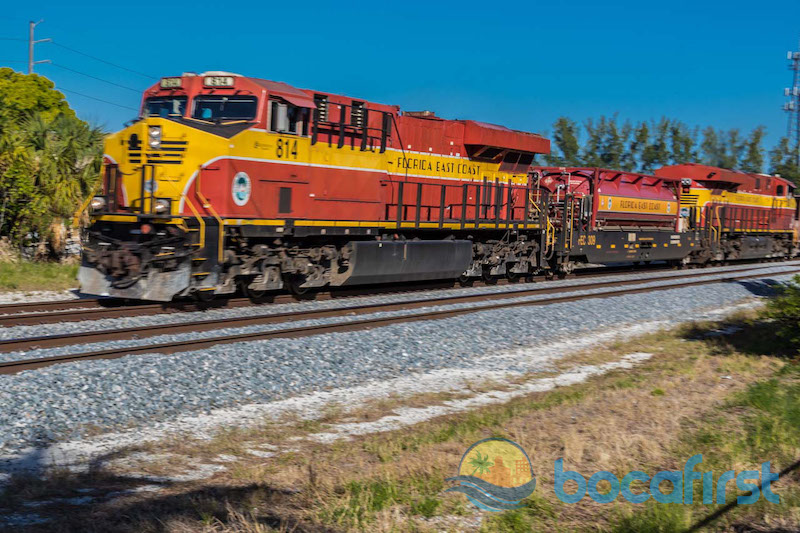The image of steam locomotives belching plumes of coal smoke are easily conjured up. But these trains of old are not easily found in the U.S. anymore. Except for a few scattered around the country for tourism, they have vanished. In the late 1930’s diesel locomotive designs and technology brought more pulling power, lower costs, less refueling infrastructure and less pollution. By the 1950’s, diesel locomotives had replaced steam for both passenger and freight trains.
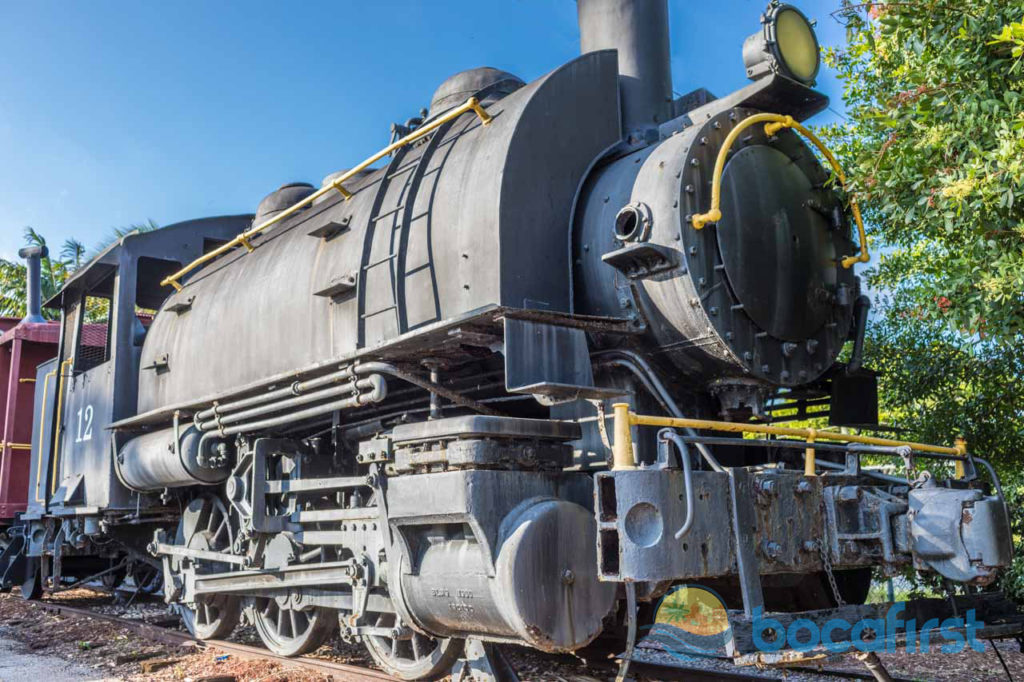
The 411 on FEC
The Florida East Coast Railway (FEC) is the descendant of Henry Flagler’s railway. That endeavor provided a land connection between the state’s east coast ports from Miami to Jacksonville and everything in between. It birthed Boca Raton and other towns up and down the coast with economic viability through tourism and agriculture. Today, FEC is a Class II regional railroad with 351 miles of mainline track. That rail system connects its freight trains to the national railway system in Jacksonville. That connection provides access for Florida commerce to Georgia, Tennessee, South Carolina and North Carolina. It has also added the regional passenger line known as Brightline between Miami and West Palm beach. It plans to extend it to the Orlando airport in the coming years.
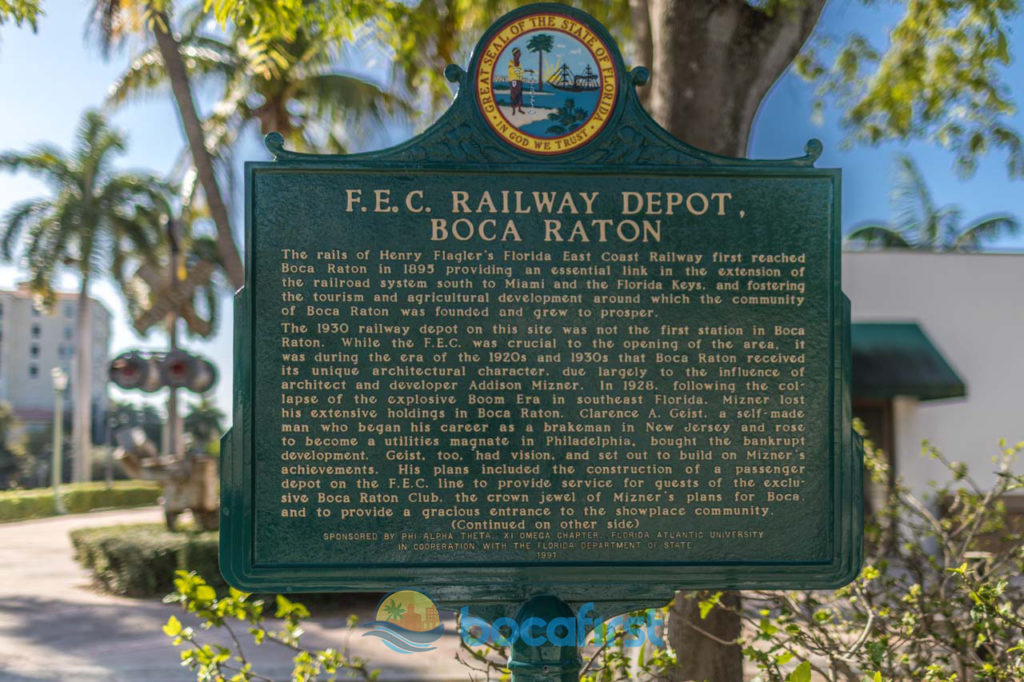
Economic Impact = Economic Gain – Economic cost
Diesel powered locomotive development didn’t stand still. Fast forward to today, diesel fuels and engines are cleaner. Alternative biodiesel and Liquified Natural Gas (LNG) are cleaner still. And, compared to other ways of transporting goods, freight trains are the leader in tons transported per gallon of fuel. The economic efficiency of railroads for moving goods is roughly 400 ton-miles per gallon versus 130 ton miles per gallon for trucks (the closest competitor).
in addition to the positive net economic impact of moving freight by rail, trains also burn less fuel
Transporting those 270 more tons of freight per gallon of fuel over trucks lowers the economic cost per ton as well as the emissions per ton. So in addition to the positive net economic impact of moving freight by rail, trains also burn less fuel resulting in a climate savings over trucking.
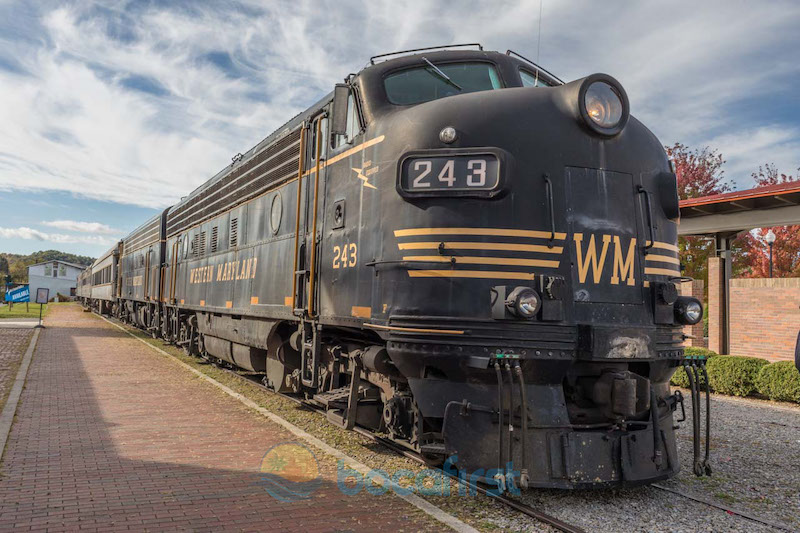
A look at the end to end picture
The marketing of electric vehicles as “Zero Emissions” is a brilliant ploy. End to end, they aren’t “zero emissions” at all. The “well to wheels” climate cost of electric vehicles (EV) includes the emissions for extracting, processing and transporting the fuel for electric plants. It also includes the emissions of the coal, nuclear or whatever fuel is used to generate electricity for charging. EVs also carry a debt of environmental impact from manufacturing the specialized batteries and specialized materials that make them economically viable. Economics aside, for an EV to be better for the environment than a gas vehicle, it has to be in operation long enough to pay off its manufacturing and operating “climate debt”. At that point, it can provide a positive “climate impact”.
Climate Impact = Climate Gain – Climate Cost
In 2017, the FEC railroad became the first in the country to convert its entire line-haul fleet from diesel fuel to Liquid Natural Gas (LNG) fuel. In doing so, FEC leapfrogged biodiesel to the lower cost and cleaner LNG. Liquid Natural Gas fuel costs 50% less than diesel and emits 30% fewer emissions.

Something smart happened
No transportation is zero emissions. But unlike EVs where consumers pay more to emit less, LNG provides both economic and climate benefits for long haul railroads. Beyond the 50% lower cost, the end to end “climate cost” of LNG including extraction, processing, transportation/storage and operating emissions is lower than the diesel alternative.
However, while the overall well to wheels emissions favor LNG over diesel, LNG has higher green house gas emissions during transportation and storage. This is where FEC did something smart. They built an LNG plant next to its tracks in Titusville. That plant processes natural gas from the area’s gas pipeline directly into storage. That eliminated emissions for transportation and thus improved FEC’s overall well to wheels emissions further.
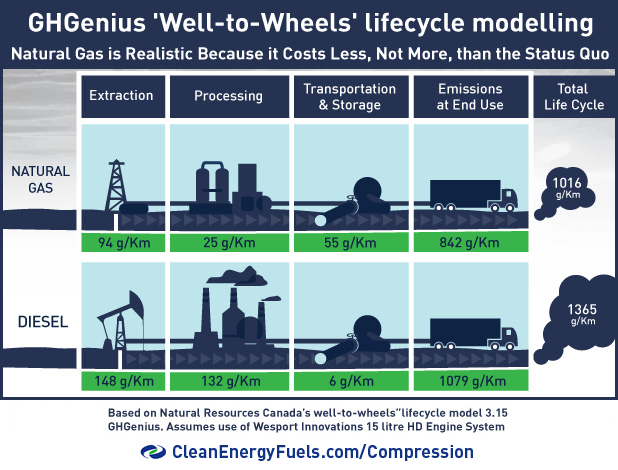
With a plant adjacent to the rails, the LNG goes from the plant’s storage tanks directly into purpose built LNG tenders. Each tender rolls into service and fuels a pair of locomotives modified with gas retrofit kits that allows them to run on either diesel or LNG. This is the equivalent of charging your EV at the electric power plant and saving on transmission losses and environmental impacts of charging infrastructure. Smart.
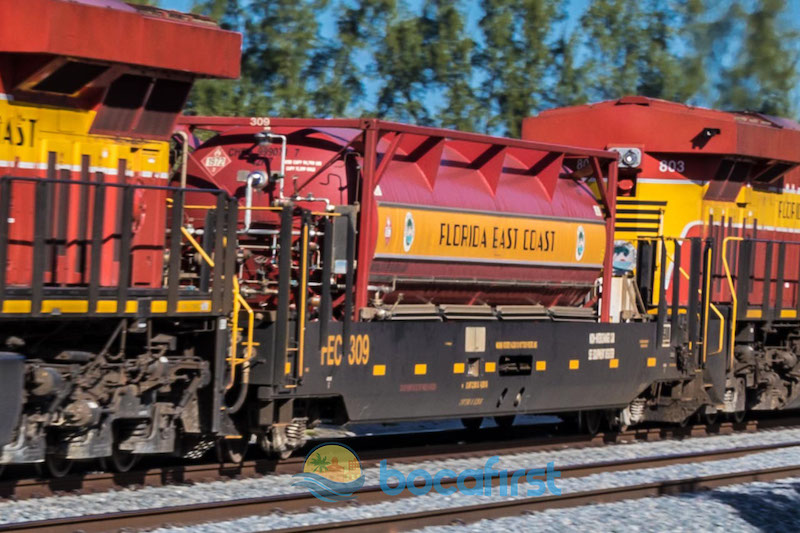
Delivering positive economic and environmental impact with freight trains
The FEC transportation system is an economic asset of Florida most take for granted. Of all the available ways to move freight trains over long distances, its LNG fleet uses the cleanest “well to wheels” alternative to deliver that benefit. There is little room for debate. Railways bring economic benefits. But in 2019, the “net” economic impact must consider both economic and climate costs. And, in that regard, the Florida East Coast Railroad is cleaner than you may think; Especially considering the alternative carried to its extreme experienced every day by many around the world and some not far off our coast.

Sources:
Are LNG locomotives the way to deal with natural gas flaring?
6 alternatives to diesel for freight transport
Rail Versus Trucking: Who’s The Greenest Freight Carrier?
How Clean is Natural Gas? Greenhouse Gas Emissions by the Numbers

